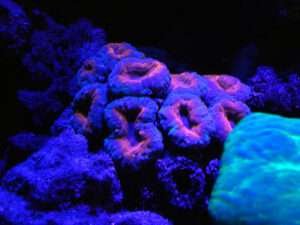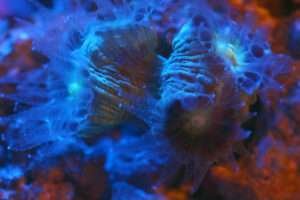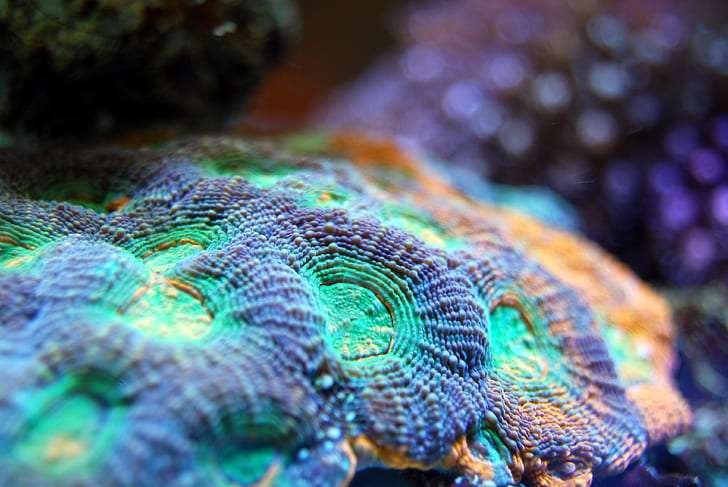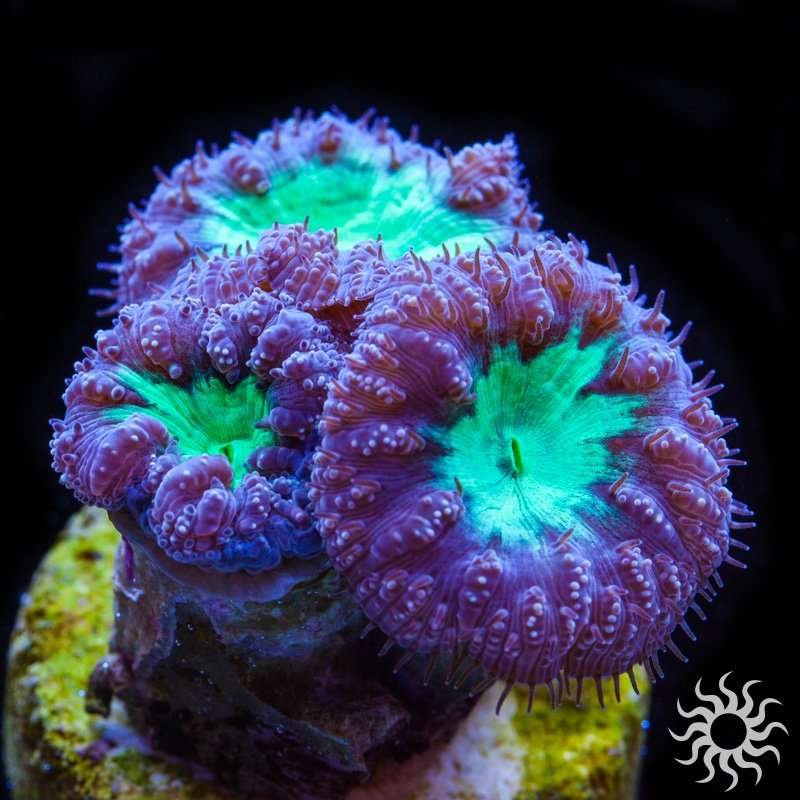Coral Candy Cane

Stick with corals that are easy to take care of if you’re new to reef keeping or just want an easy time. It’s annoying when a pricey coral dies and you can’t figure out why! We really like Caulastraea furcata, which is also known as the candy cane coral, because it doesn’t need much care. It’s pretty simple to take care of and looks amazing!
How candy cane coral looks and where it lives naturally
Large polyp stony (LPS) coral Caulastraea furcata has many popular names, but the most well-known is “candy cane coral” because of the way it looks. Like a candy cane or peppermint, the polyps have light bands going around the middle of them. Most candy cane corals have dark polyps with a green center, but this species has grown in selective farming to have polyps of different colors.
At your local aquarium shop, you might find candy cane coral in the following colors:
Kryptonite candy cane coral is a common type that is bright green and looks like it glows when lit by actinic light.
Two types of candy cane coral are teal and blue. Blue with a hint of pink, as the name suggests.
Alien eye candy cane coral: This type of polyp has purple sides and a bright green middle, which makes it really beautiful.
The coral looks like a trumpet because it has a stalk that is covered by a soft bulb called a polyp. However, the thick growth of the polyps makes it hard to see this structure clearly most of the time.
Natural setting
The well-known geologist and zoologist James Dwight Dana was the first person to formally identify candy cane coral in 1846. It lives in the Indo-Pacific area, which includes eastern Africa and French Polynesia. The Great Barrier Reef in Australia is a popular place to find it.
This coral grows best in shallow reef slopes that are only about 100 feet deep in the wild. It usually grows on soft soil and forms big groups that can be up to 16 feet across.
The IUCN says this species is of Least Concern, but it does say that the number is going down. This is not a surprise because ecosystem loss, climate change, ocean acidity, and other things put coral reefs around the world in danger.
Where to Put Candy Cane Coral
There are many good things about candy cane coral, such as its calm personality, low care needs, and ability to survive changes in water quality. It does not need a lot of food or water to grow. It shouldn’t be put in the top layer of the tank, though, because the light there might be too bright and make the polyps shrink back. Up to 150 PAR is best for this coral. It’s best to keep the tank’s brightest spots for corals that need them and give the candy cane a sandy spot to make it feel like it’s in the wild. Aquariums still need to be maintained regularly.
Taking care of

To keep your candy cane coral healthy and happy, you should make small water changes once a week and check the water factors often. Phosphates should always be low (0.05–0.07) and nitrates should never be more than 10. Also, keep an eye on the calcium and magnesium levels. They should be between 400 and 440 ppm and 1250 and 1350 ppm, respectively, to keep the hard coral’s body healthy. If something is wrong, the coral polyps will pull back to show that they are unhappy.
Giving Candy Cane Coral Food
It’s not necessary to feed candy cane reefs very often; twice a week should be enough. They are able to catch little bits that move around the tank on their own. Every night, a healthy Caulastraea will spread its limbs to catch what it needs.
Zooplankton is one of the things these corals eat, but zooxanthellae also give them food. These are algae that live with corals and help them make food. The corals’ bright colors come from the algae.
The stalks of your candy cane corals will grow longer at night and when there is food in the tank. Some reefers say that this species grows a lot faster when mysis and other small coral foods are added regularly. You could feed them more often if you don’t see much happening.
Most corals, including this one, do well when they are fed with a turkey baster. The best time to feed is when the tentacles are already out in front of you.


